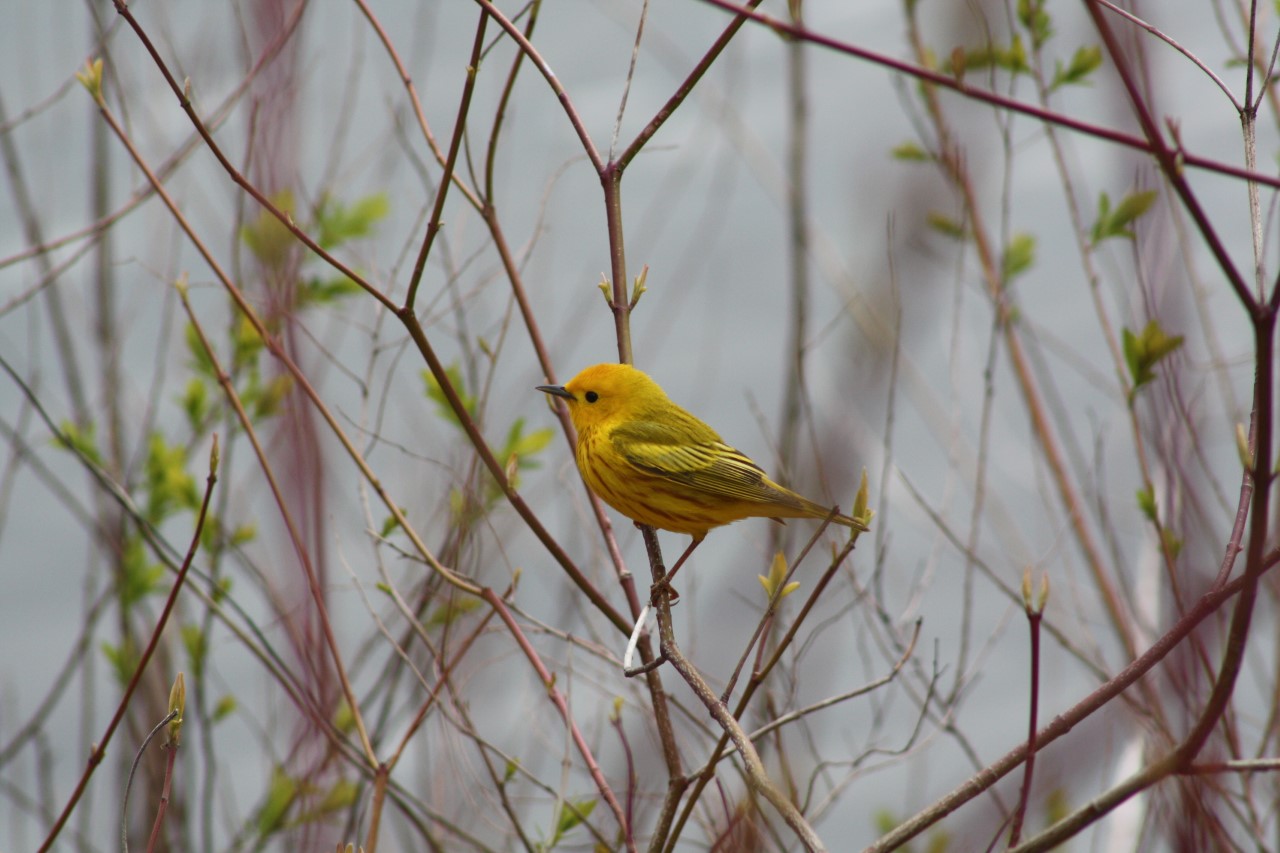
I firmly believe that you are given only so many migrations – it is your density. Er…destiny. And I have to wonder at how many fantastic birds and animals are NOT being seen and appreciated by people as they avoid this pandemic by staying home. Don’t get me wrong: I strongly agree with the social and physical distancing rules that have been put into place. I’m just sorry that this migration will go through largely unnoticed. There’s such a big push on for virtual learning as a replacement for school. I can see the need for it. But seeing a real bird that you’ve searched for is much more meaningful than seeing it on a screen, photographed/filmed by someone else. And holding that bird in your hand tops it all. Especially when you consider the 1000’s of kilometers it has flown to get here, the obstacles it has overcome. To miss it is….sad.
At Ruthven we’ve developed such a neat group of volunteers. I must say I miss their enthusiasm. Banding on one’s own has its own merits but it’s really nice to share the experience -the wonder- with people of like mind. So it’s a good thing that a number of these volunteers have been getting out doing little walks and hikes and taking pictures and trying to take in this massive avian movement. But, it’s still not the same as holding those birds in your hand…..lost opportunities. A whole season of them.
And it’s not just birding opportunities that are being missed. Most of you know that Net Lane #10 is ranked in the Top Ten Treacherous Net Lanes in the World. Two outstanding athletes, Peter Scholtens and Joshua Thorne took on its challenge to chalk up the only perfect scores (10 out of 10) on it, sticking the landing in the Full Dorsal Back Flop, Arms Akimbo. Peter has gotten a little long in the tooth for this sport but Joshua had his heart set on being the ONLY person to attempt, let alone succeed, in sticking the Front Flop, Arms Akimbo. No one has ever been able to pull it off. A few years ago a member of the Larks (I forget the athlete’s name) did a partial Front Flop (actually it was a Face Plant) but it was on one of the training hills – a short, steep section of the Carolinian Trail. After cleaning her binoculars I had the unpleasant task of having to tell her she had been unsuccessful…..but good try!
Josh was pumped. This was gong to be his season. The net lane was at its slickest and the wet cold conditions kept it that way. Long time athletes familiar with the #10 run were in agreement – they had never seen such good conditions for a Front Flop, Arms Akimbo. Like I said, Josh was pumped. His wife, Amy, added to his excitement when she bought him new rubber boots for Christmas in preparation for his attempt. But then COVID-19 hit and by the time restrictions were lifted to the point that he and Liam could return to do the census, the net lane conditions had deteriorated to the point that even Carol would descend to extract birds. A glaring missed opportunity indeed!
This was an exciting day to be monitoring a migration. Orioles, Grosbeaks, warblers…everywhere. We handled 75 birds (banding 54, processing 21 retraps – many of them returnees from previous years (eg. a Rose-breasted Grosbeak from 2015!) and we had a species count of 69. One more and we would have soared into Matt Timpfian levels of observation counts. Something to aspire to….
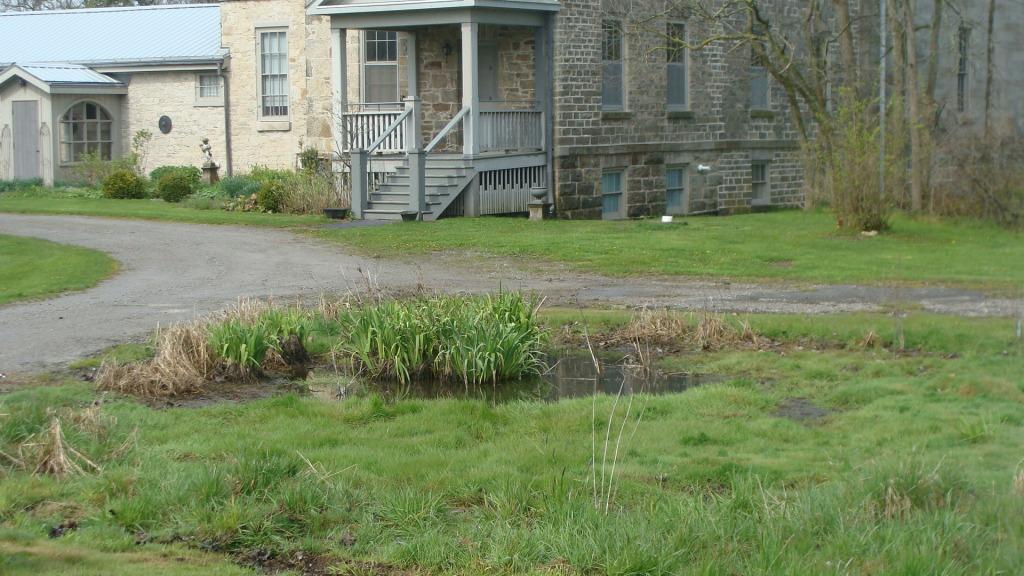
We got a great lesson in the importance of establishing “micro habitats”. Liam was doing the census when he came rushing up to the banding lab to let me know that there was a pair of Solitary Sandpipers in the little wetland behind the Mansion. Amazing that they found it. But so good that it was there to provide sustenance. Take a look at the picture. This little wetland would easily fit into most backyards. If many people developed them the overall area of wetlands would increase dramatically. It might prove to be useful to migrants in these days of eroding wild space.
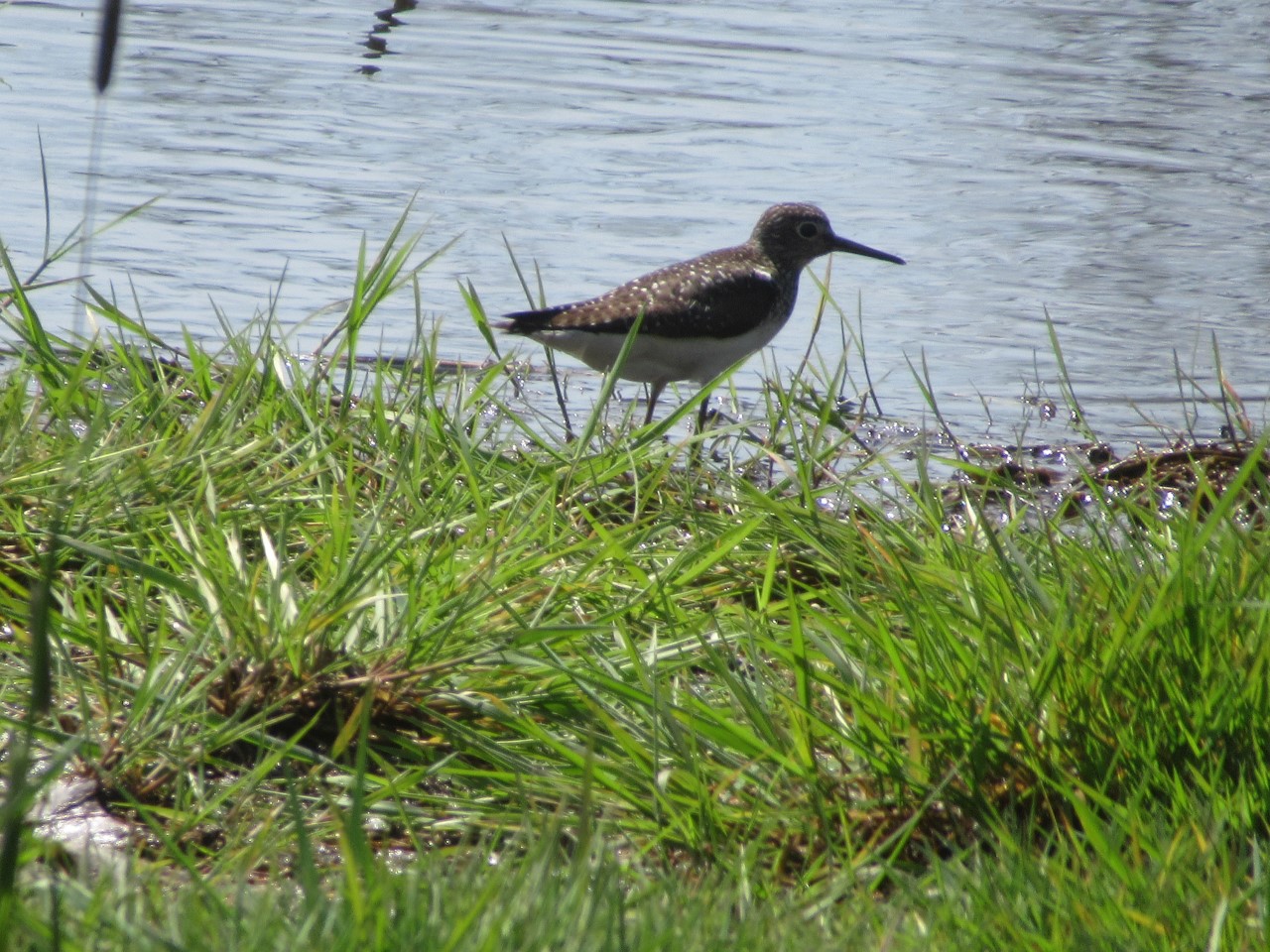
Banded 54:
3 Least Flycatchers
2 Blue Jays
8 Gray Catbirds

1 Blue-winged Warbler
1 Tennessee Warbler
2 Nashville Warblers
3 Yellow Warblers

1 Chestnut-sided Warbler
2 Myrtle Warblers
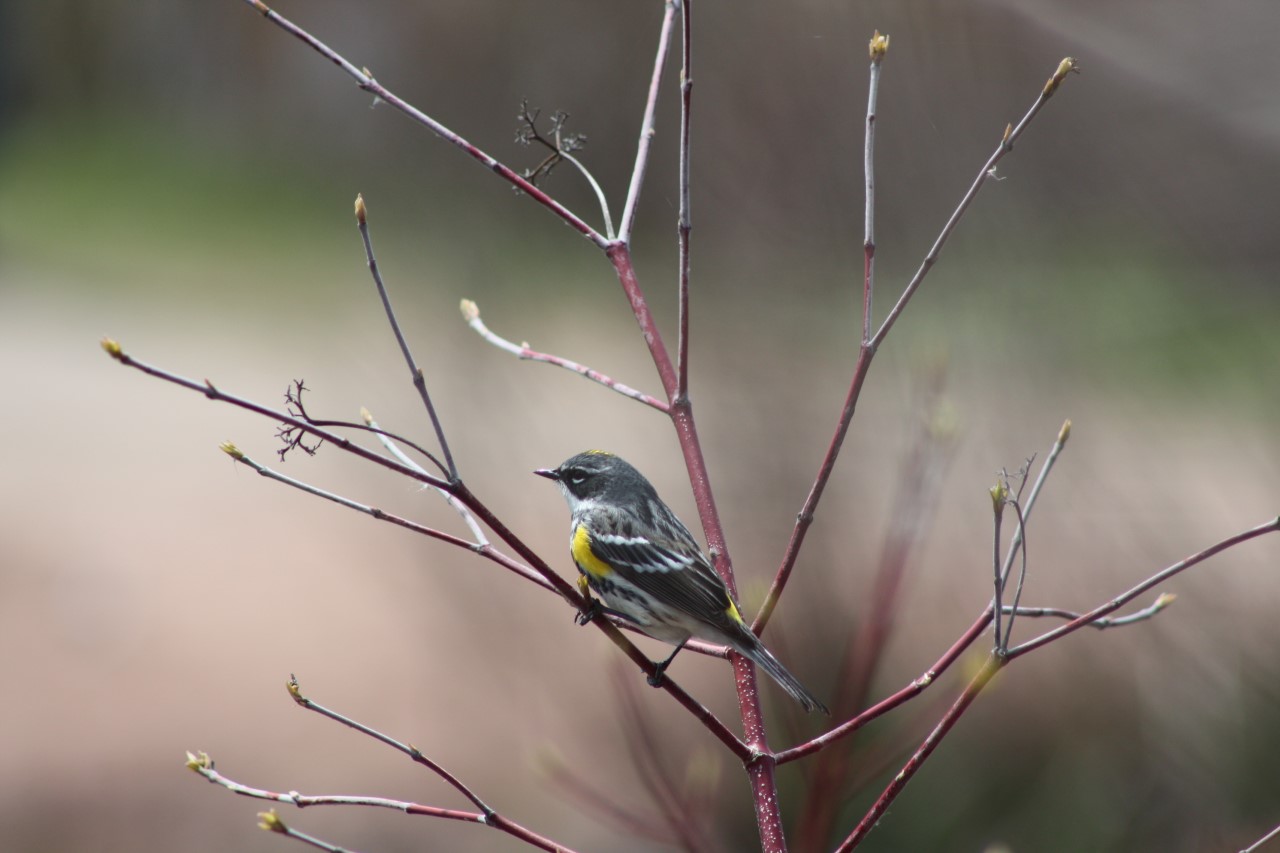
3 Western Palm Warblers
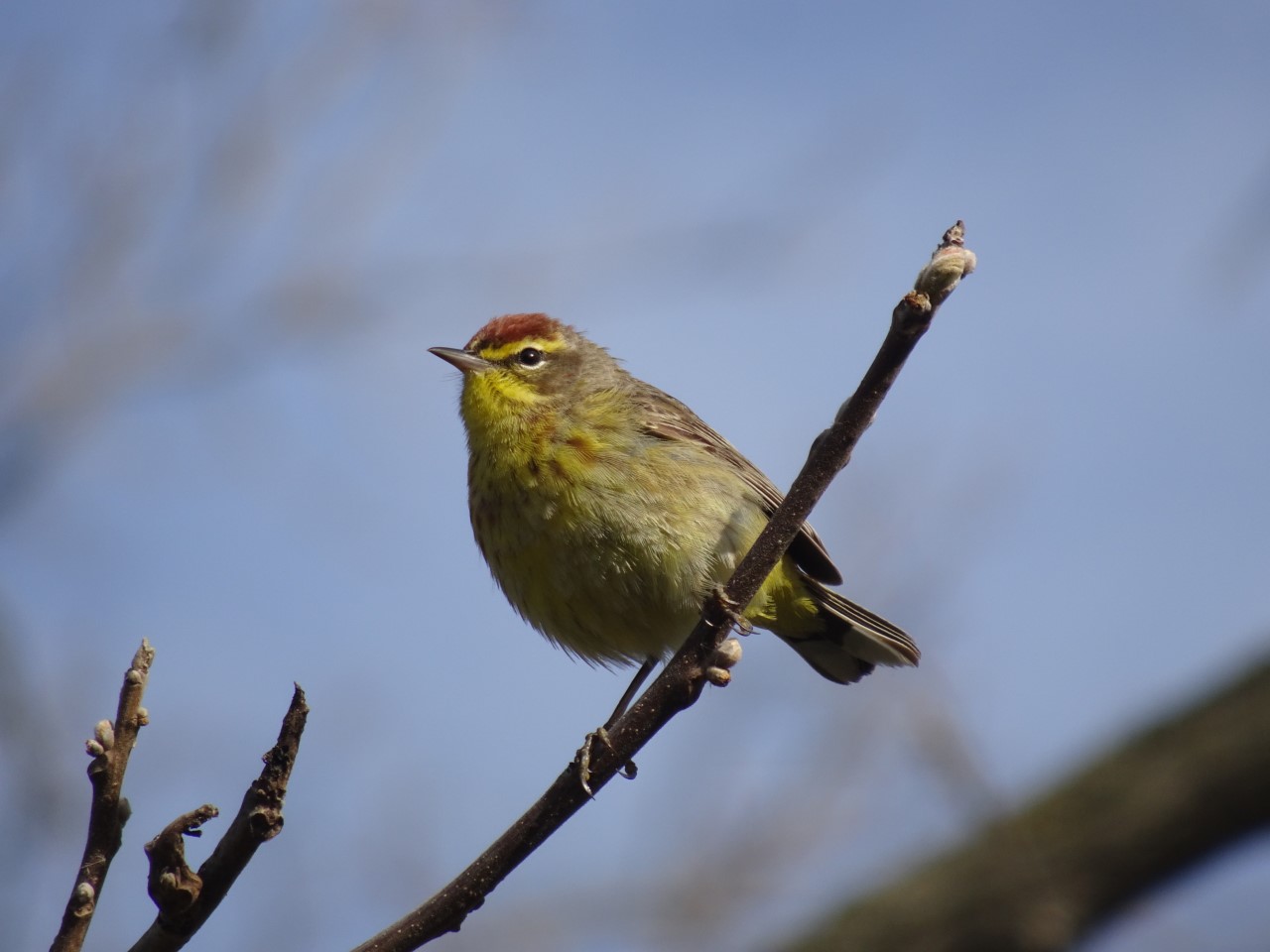
1 Black & White Warbler
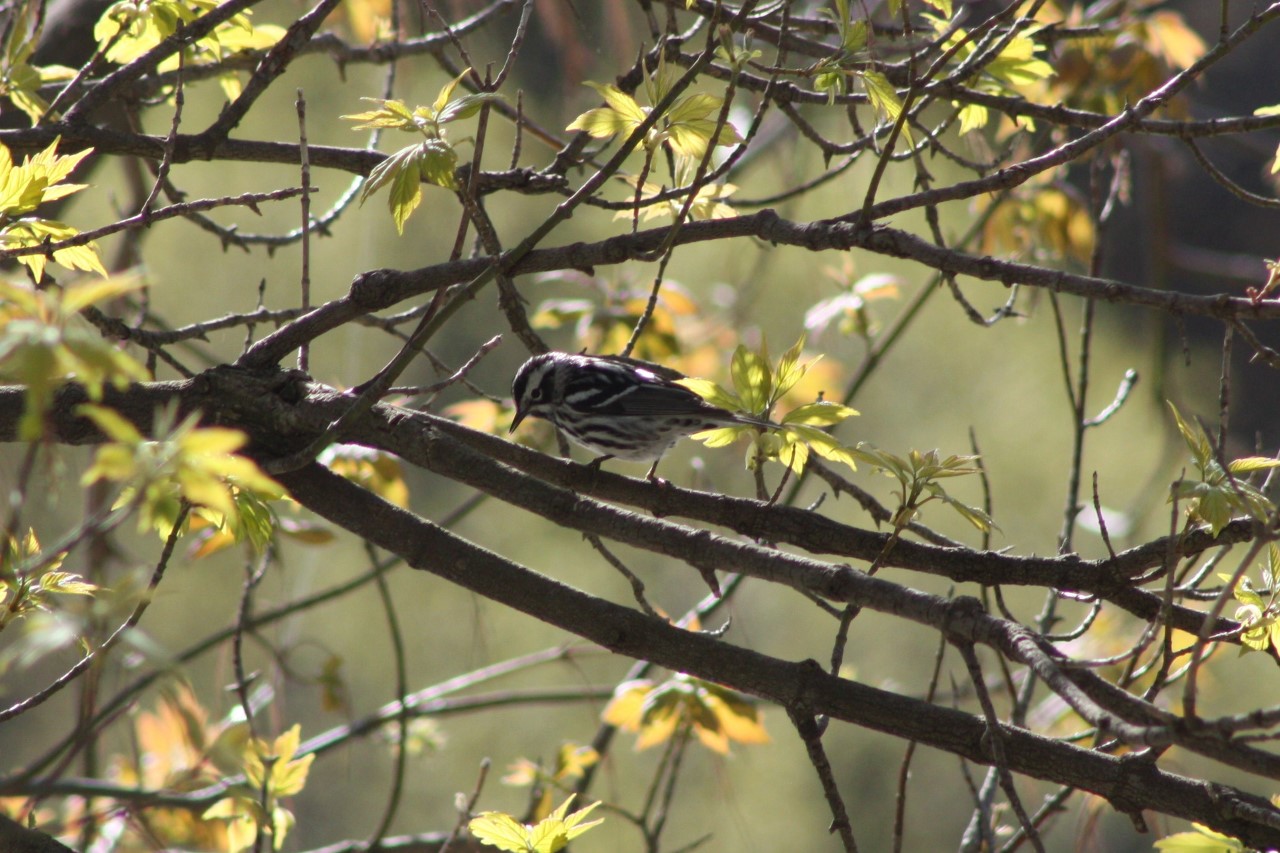
3 Common Yellowthroats
5 Rose-breasted Grosbeaks
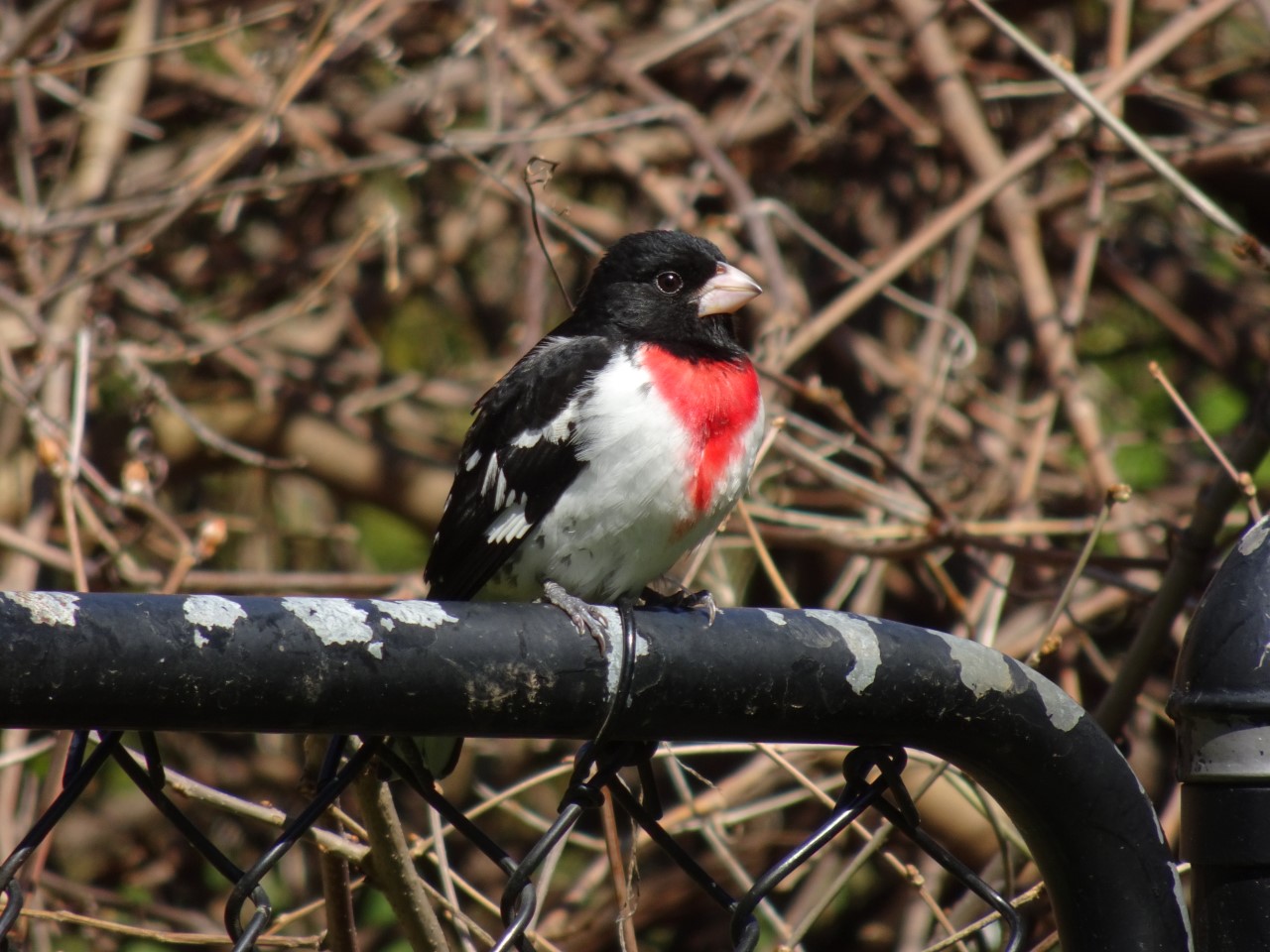
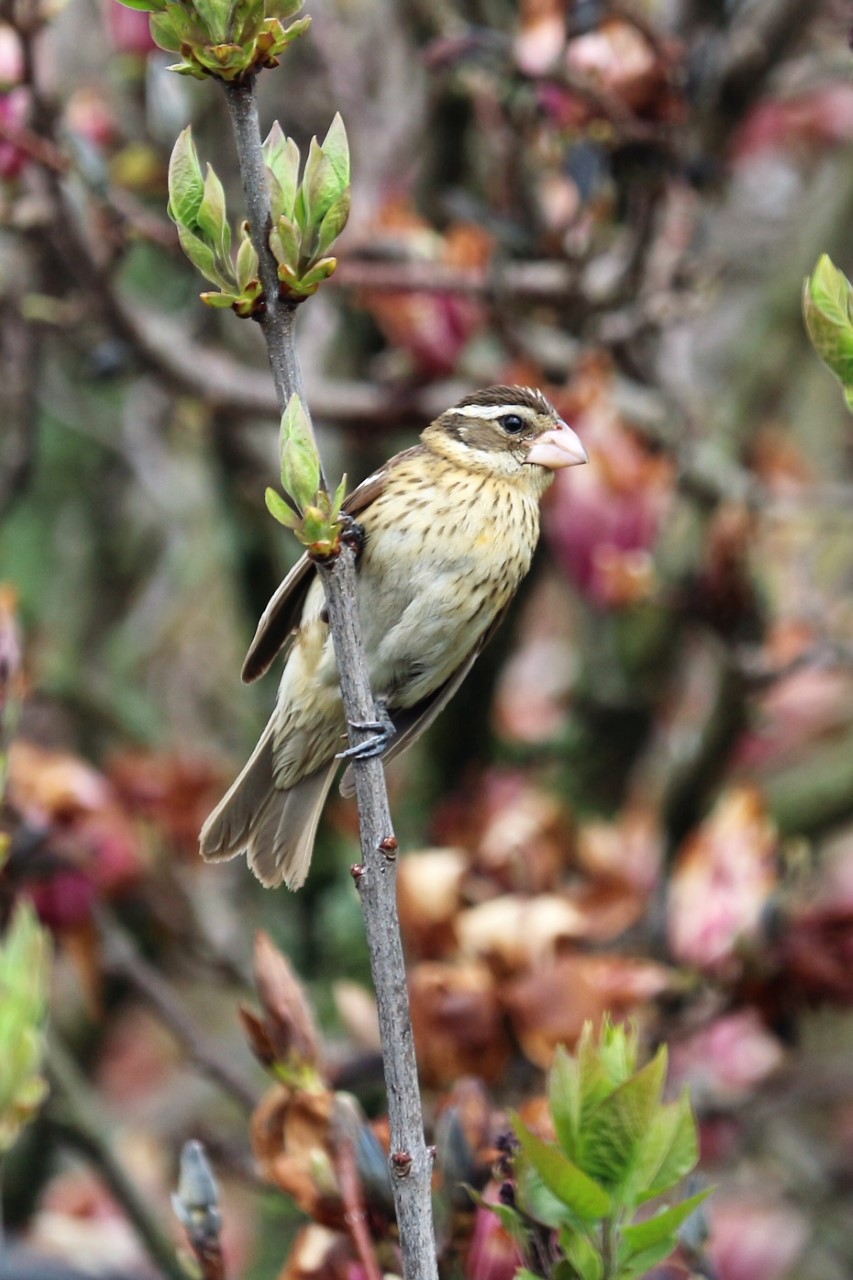
1 Chipping Sparrow
1 Lincoln’s Sparrow
5 White-throated Sparrows
3 Eastern White-crowned Sparrows
5 Baltimore Orioles
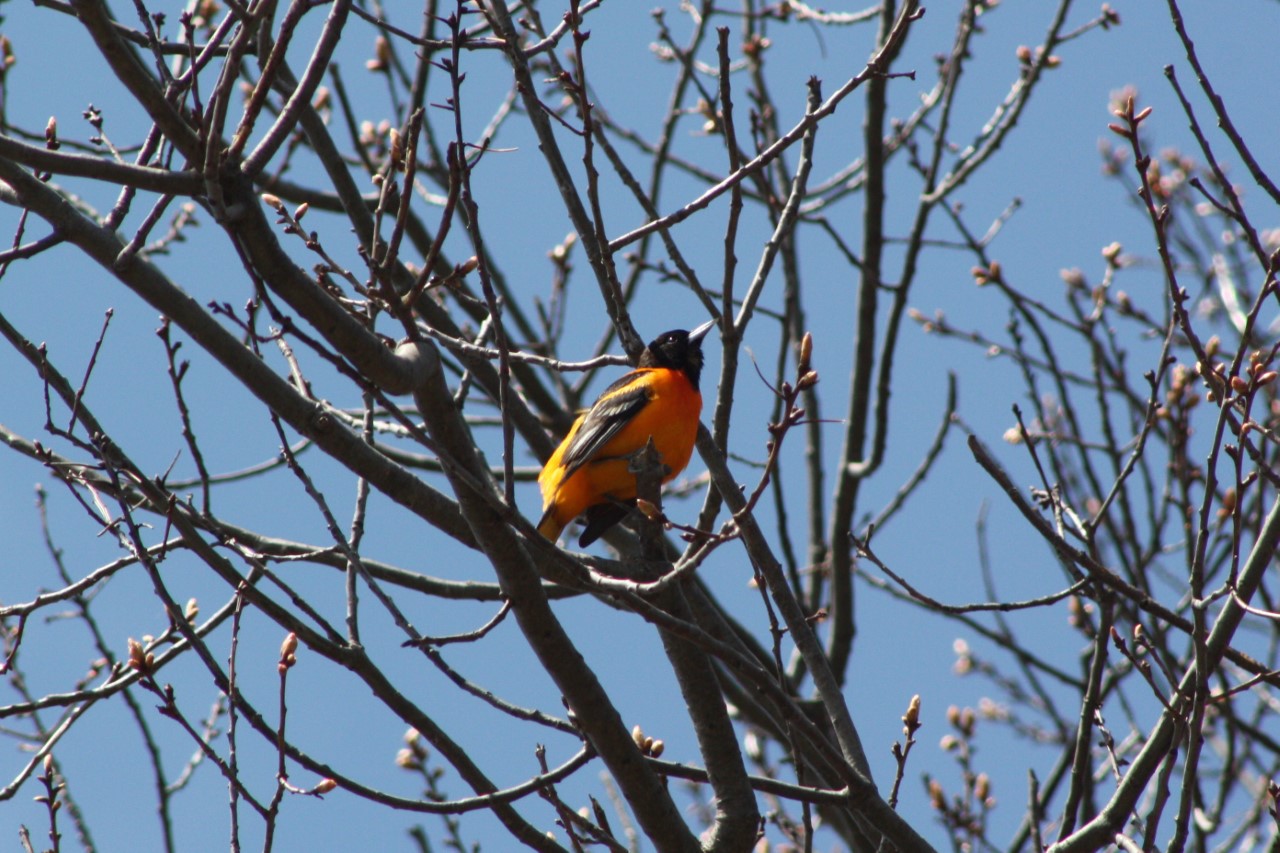
4 American Goldfinches
ET’s: 69 spp.
Photos:
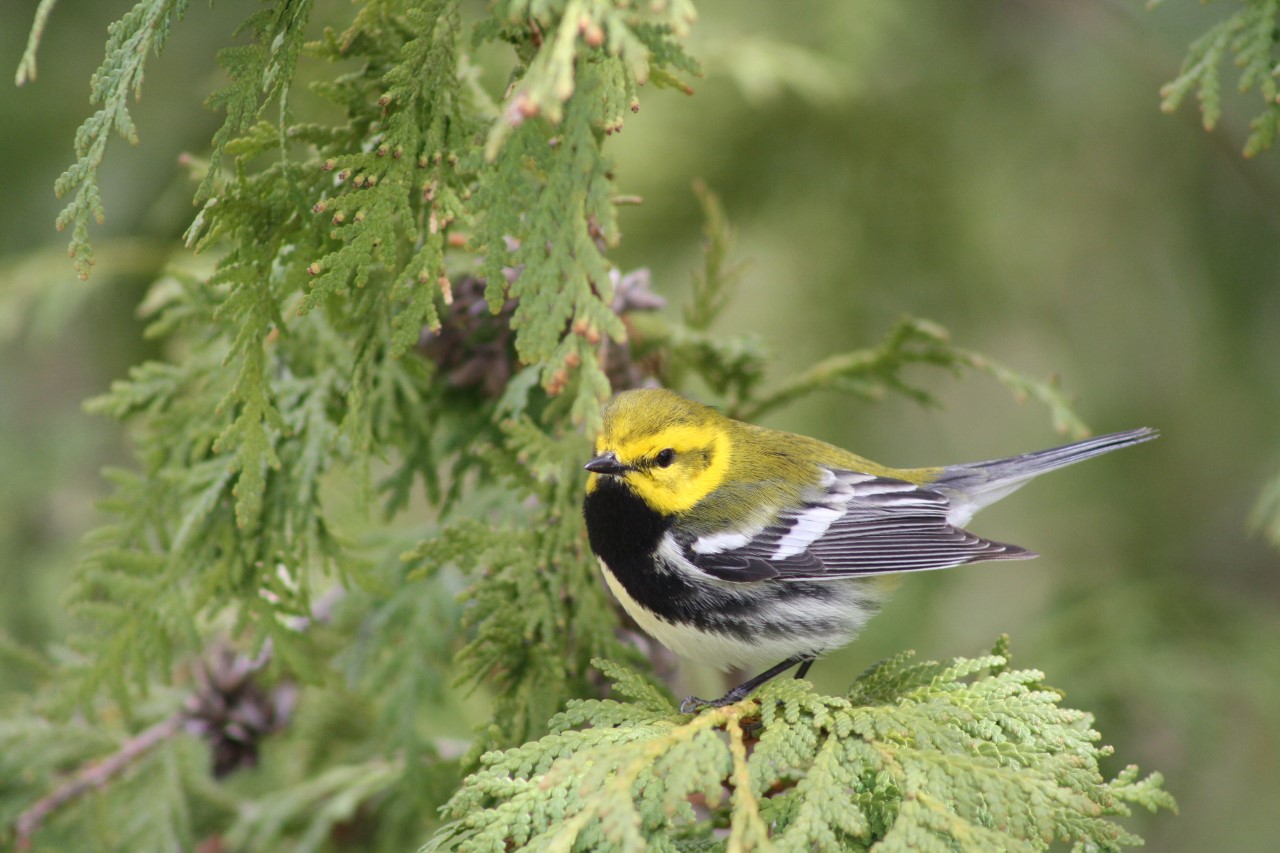
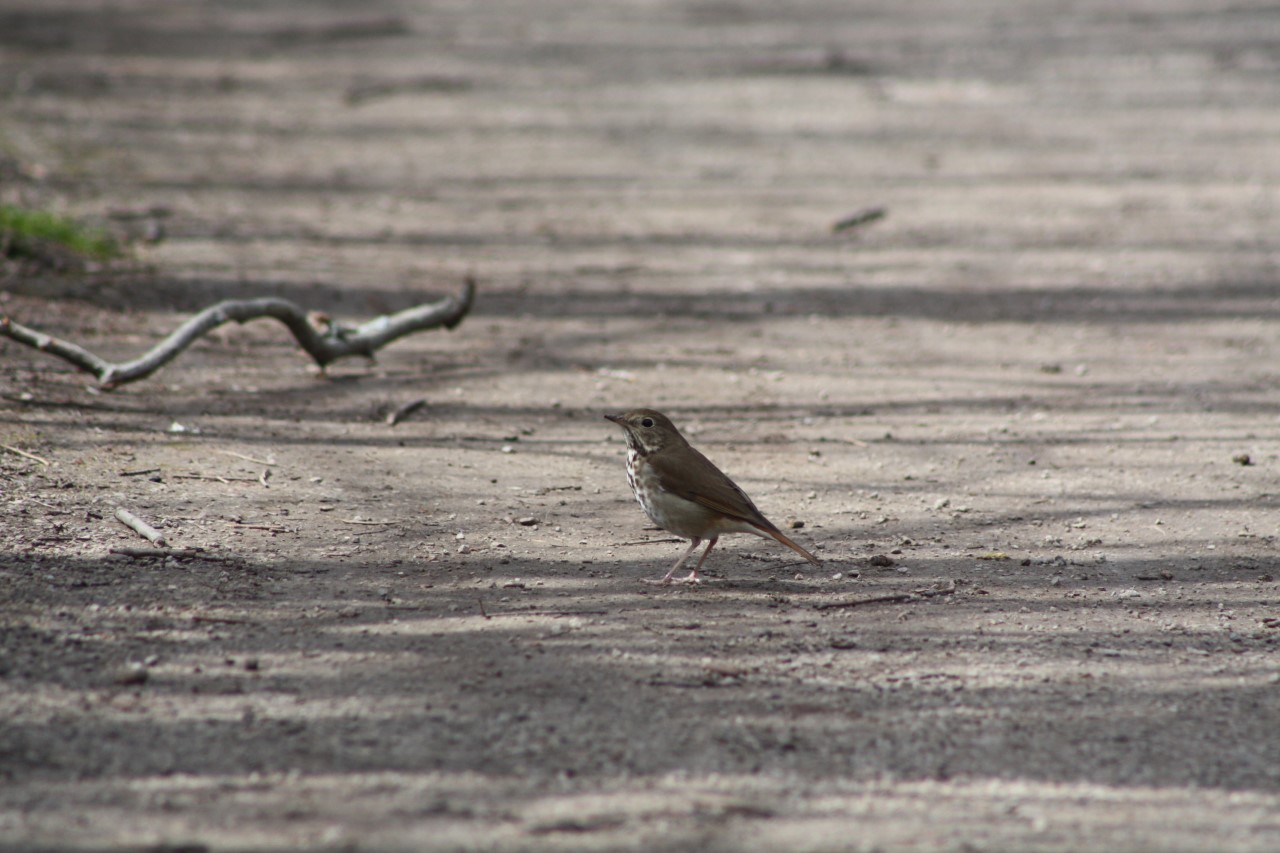
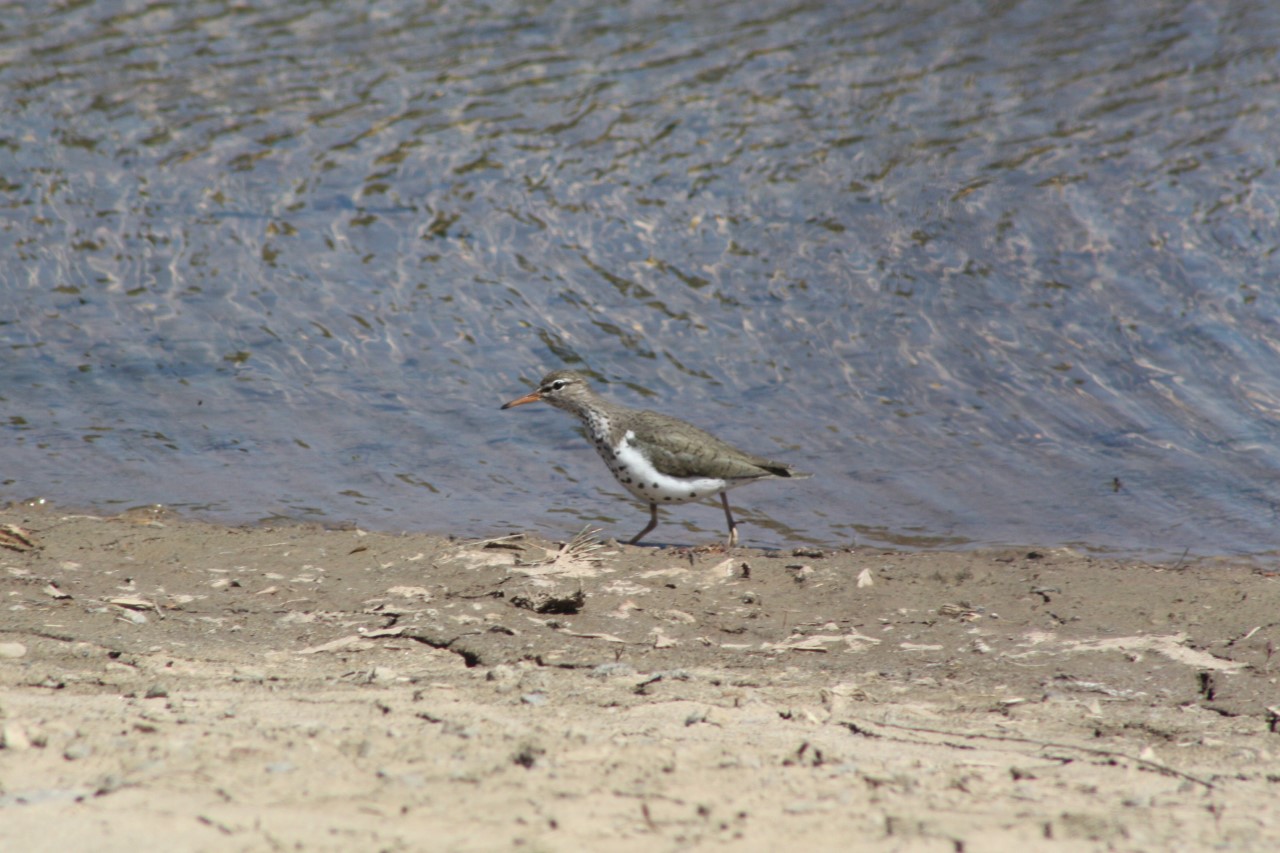
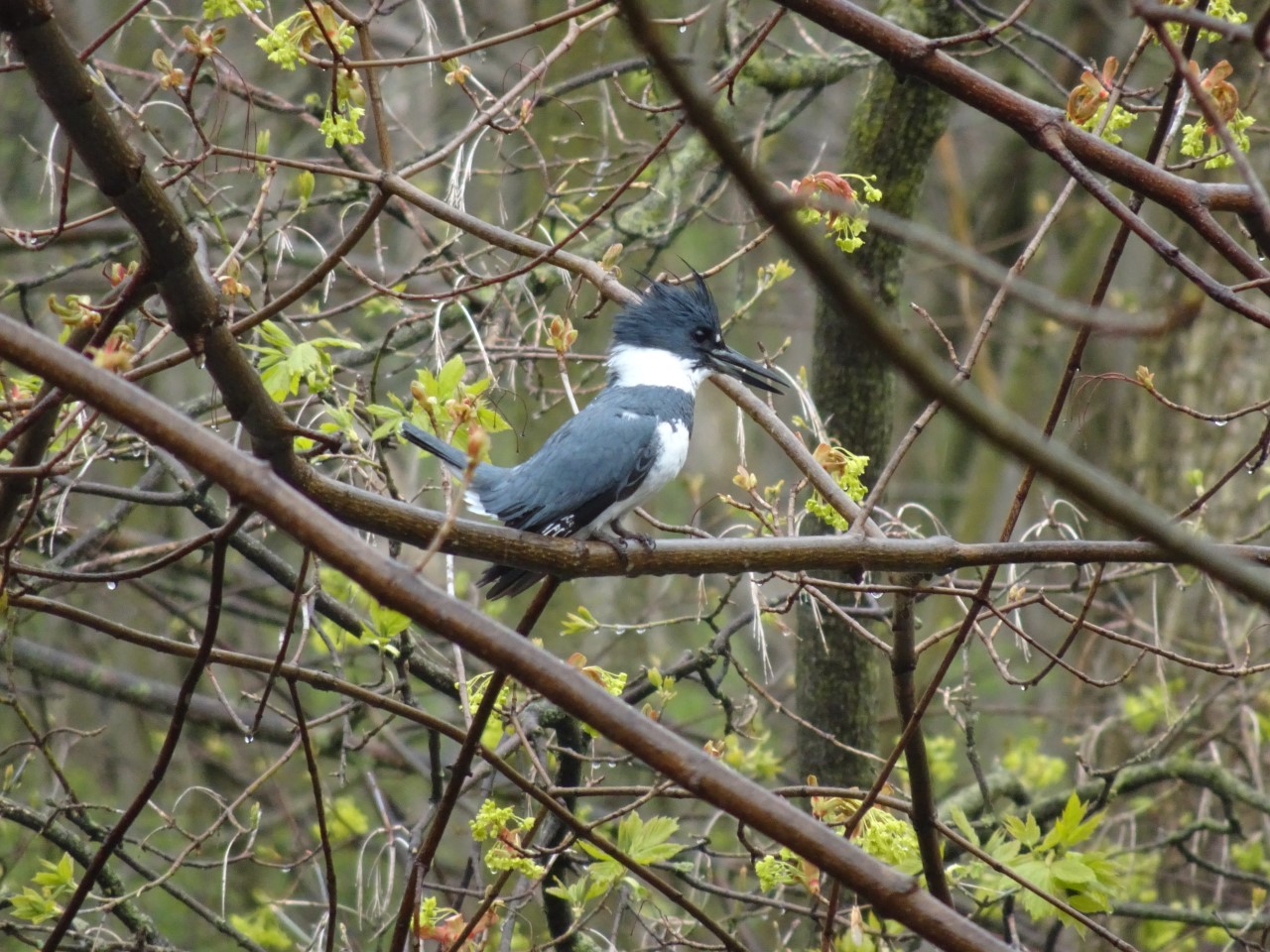
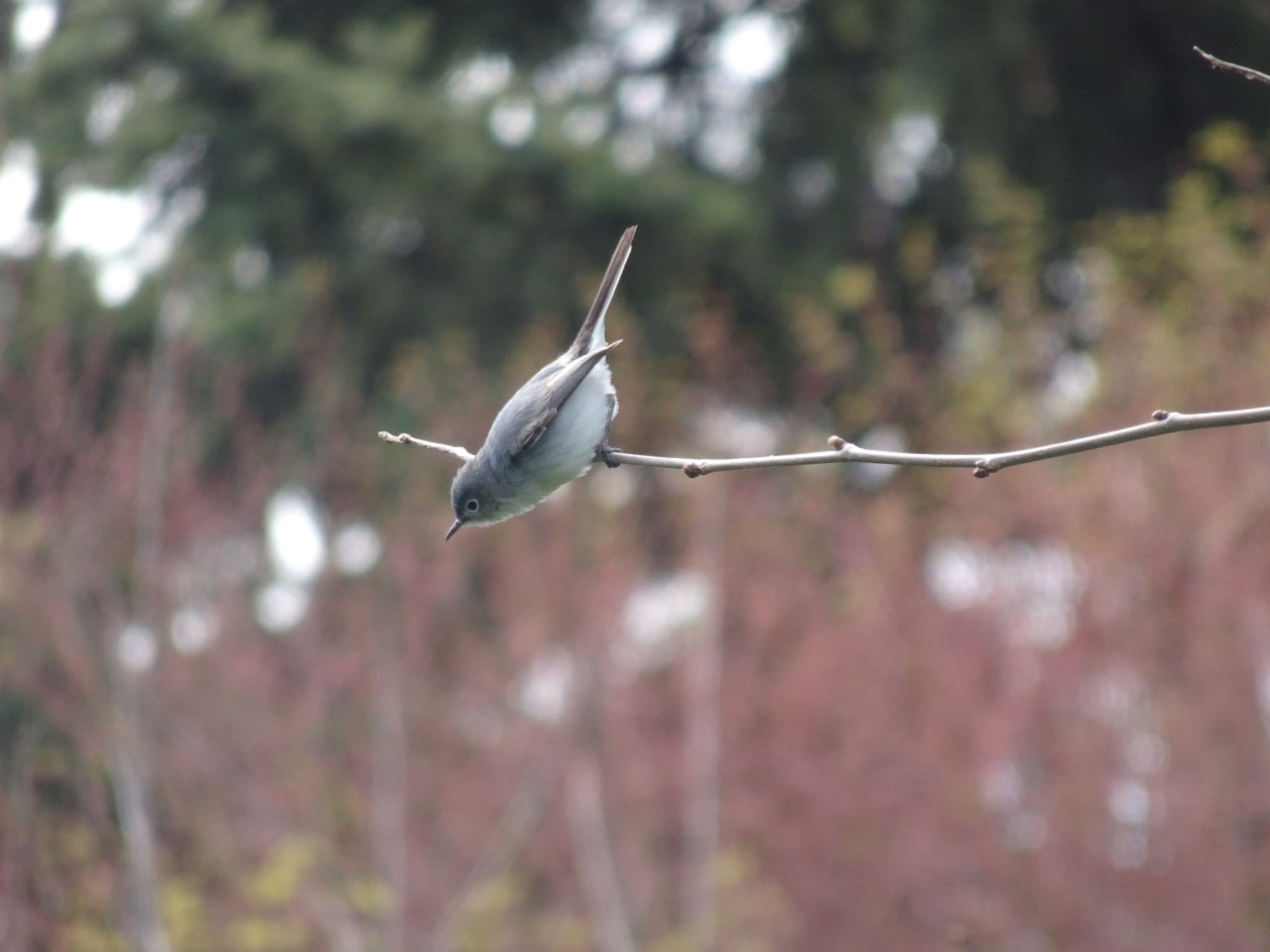
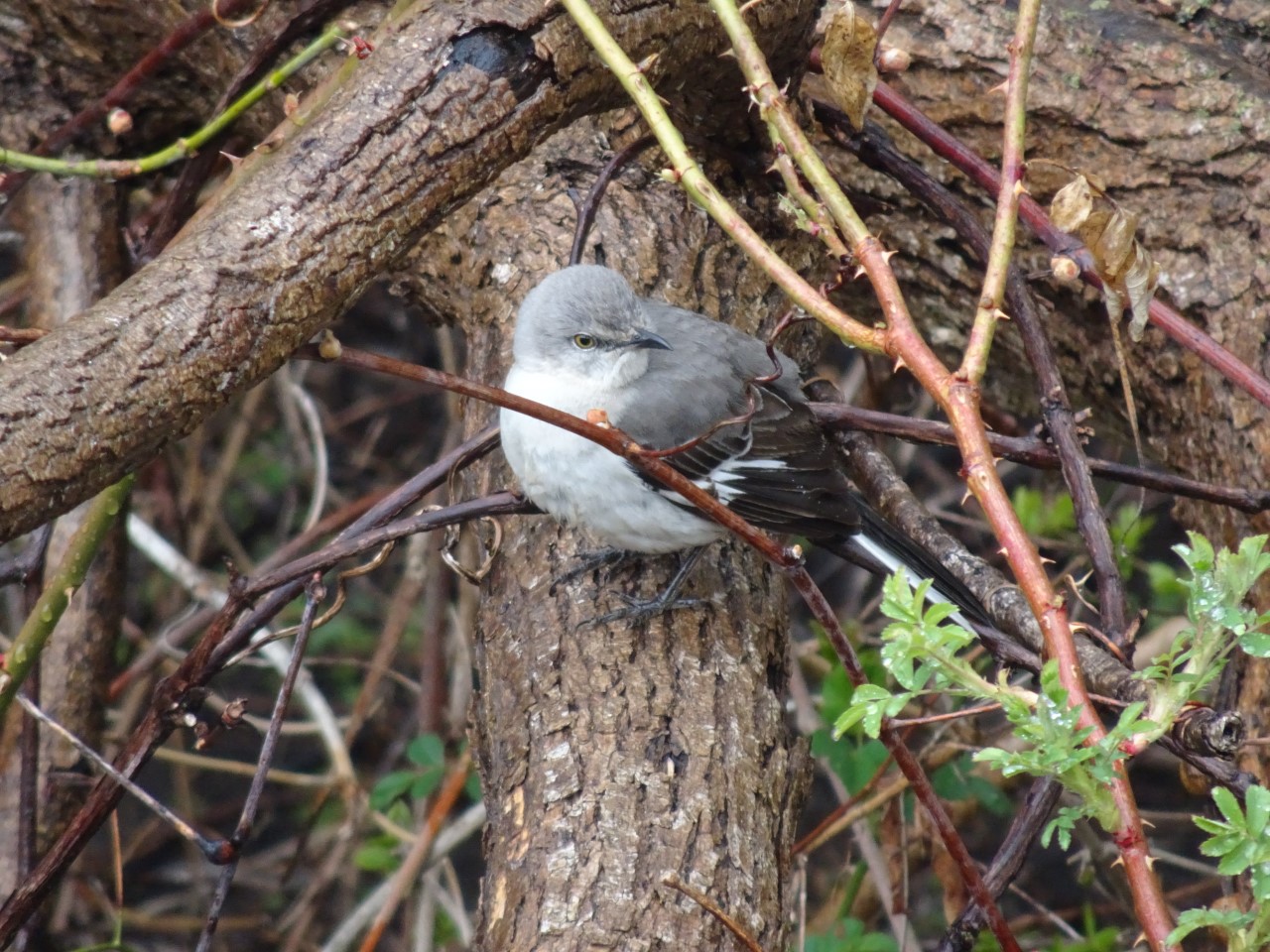
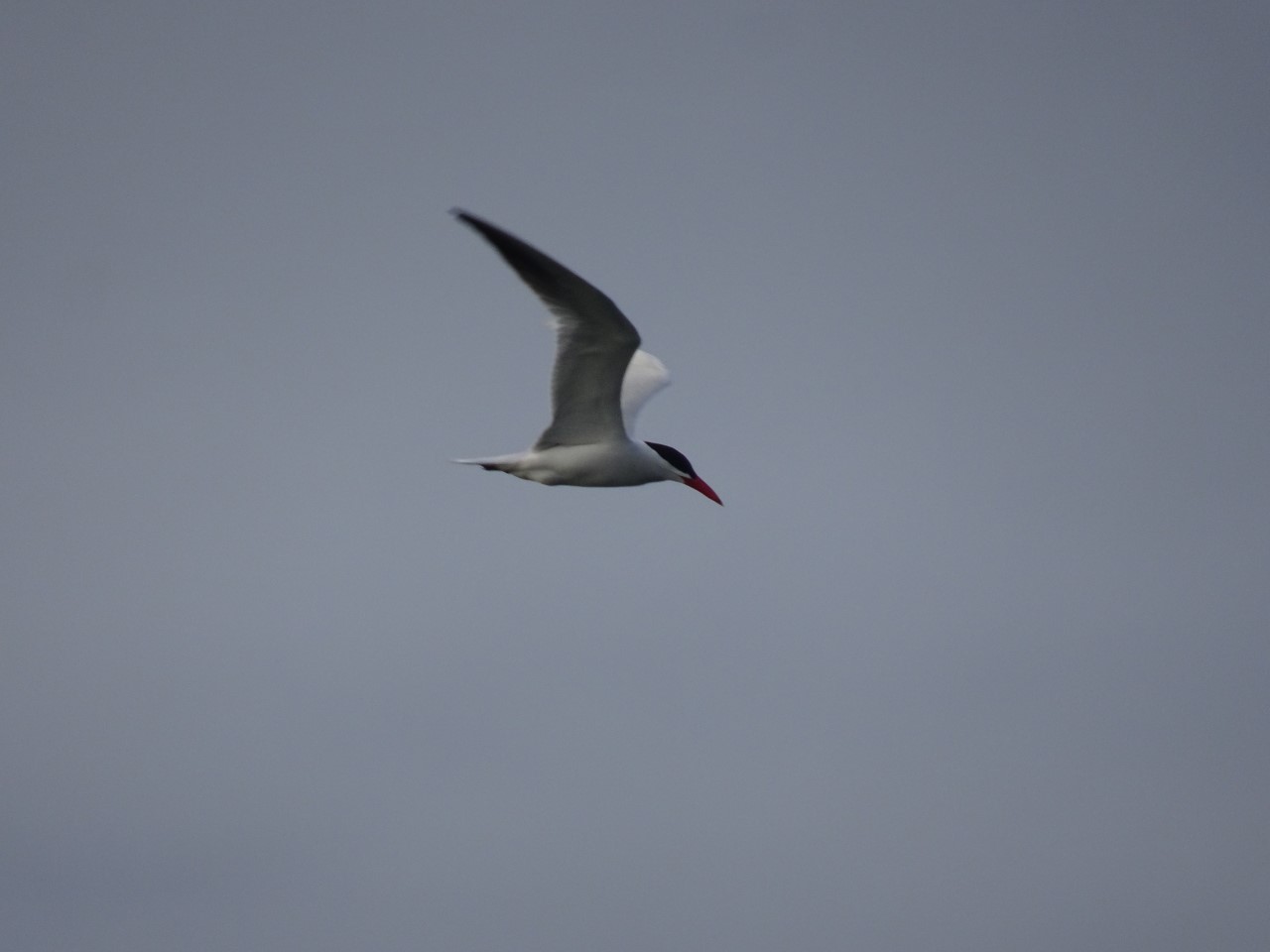
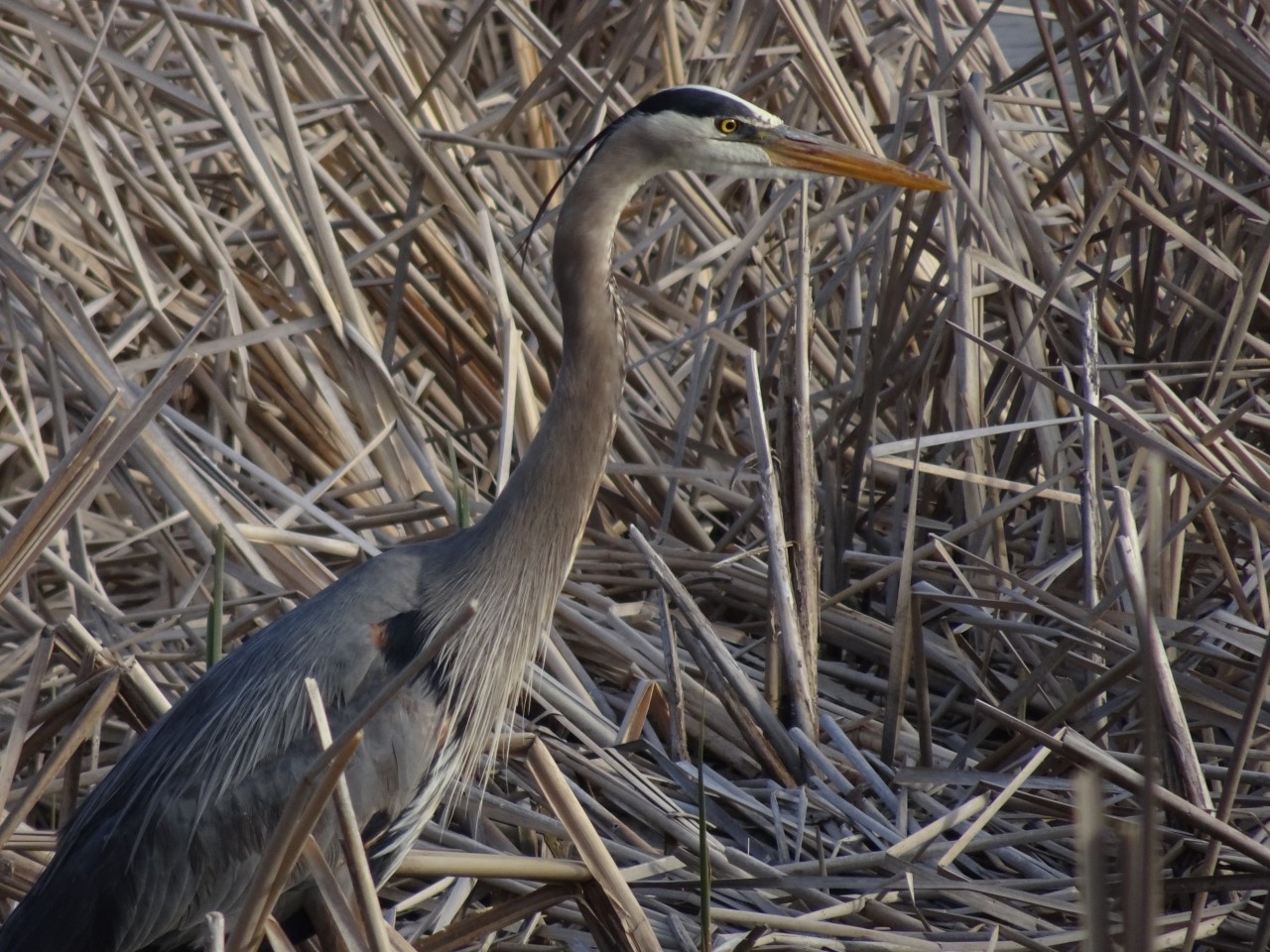
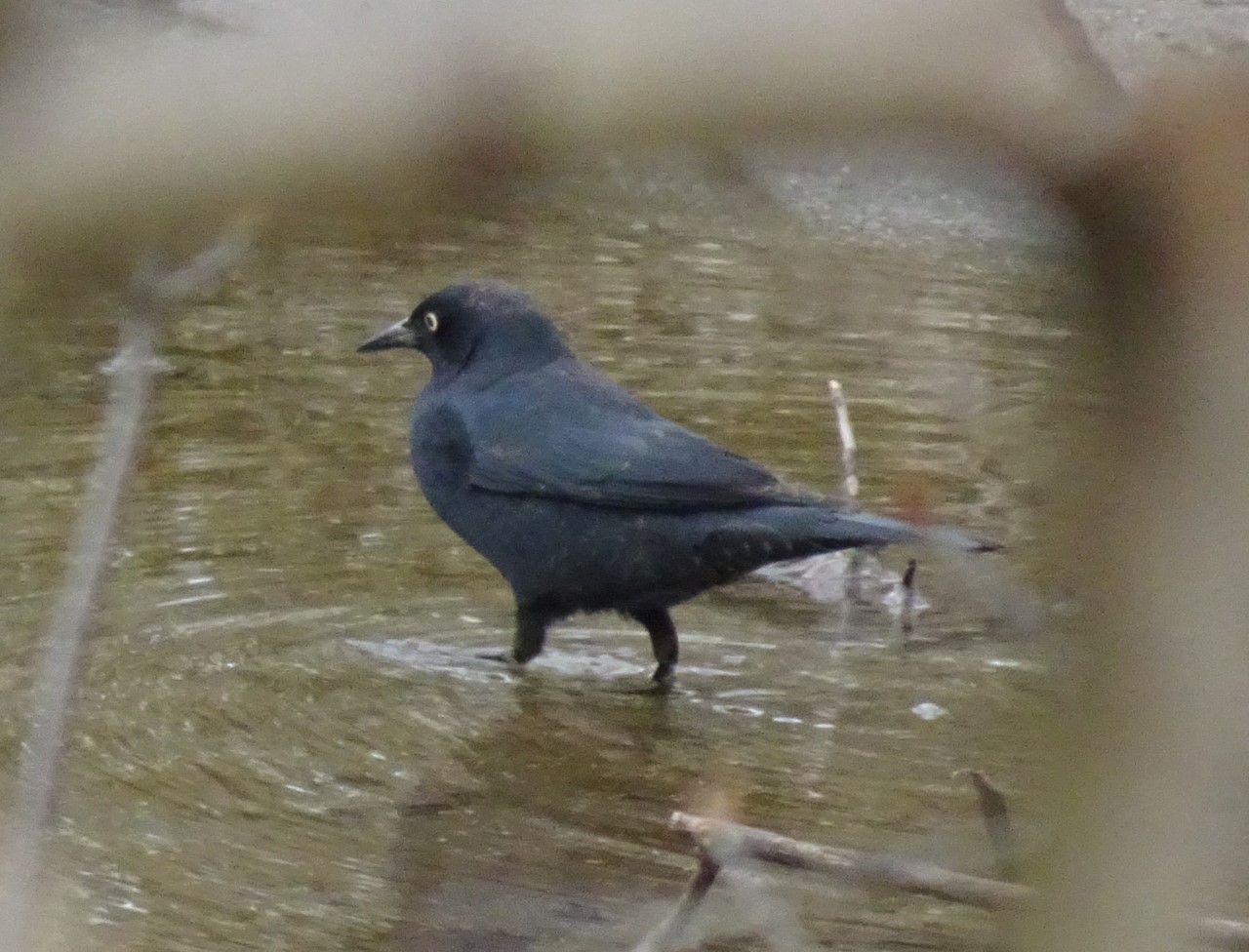
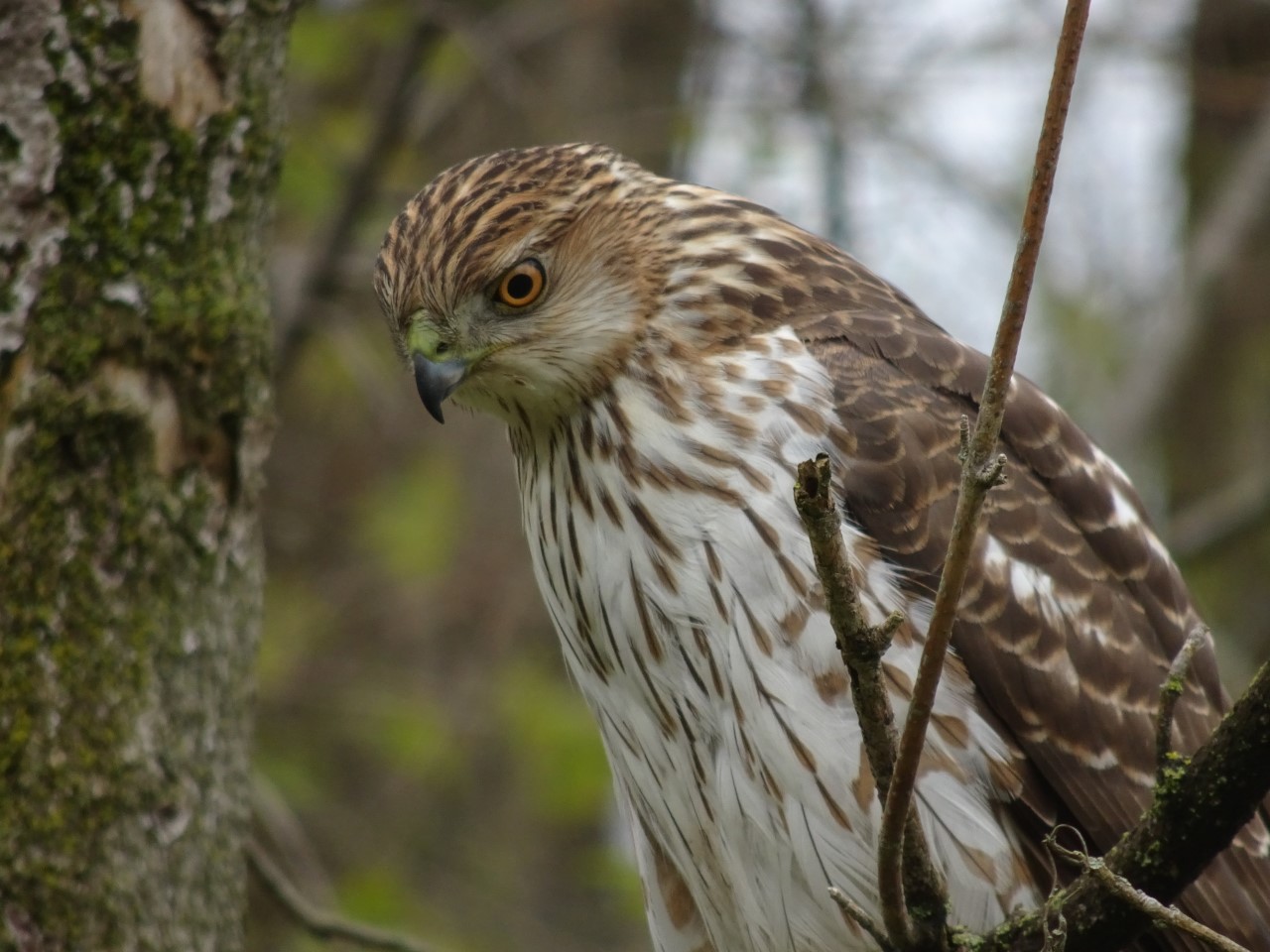
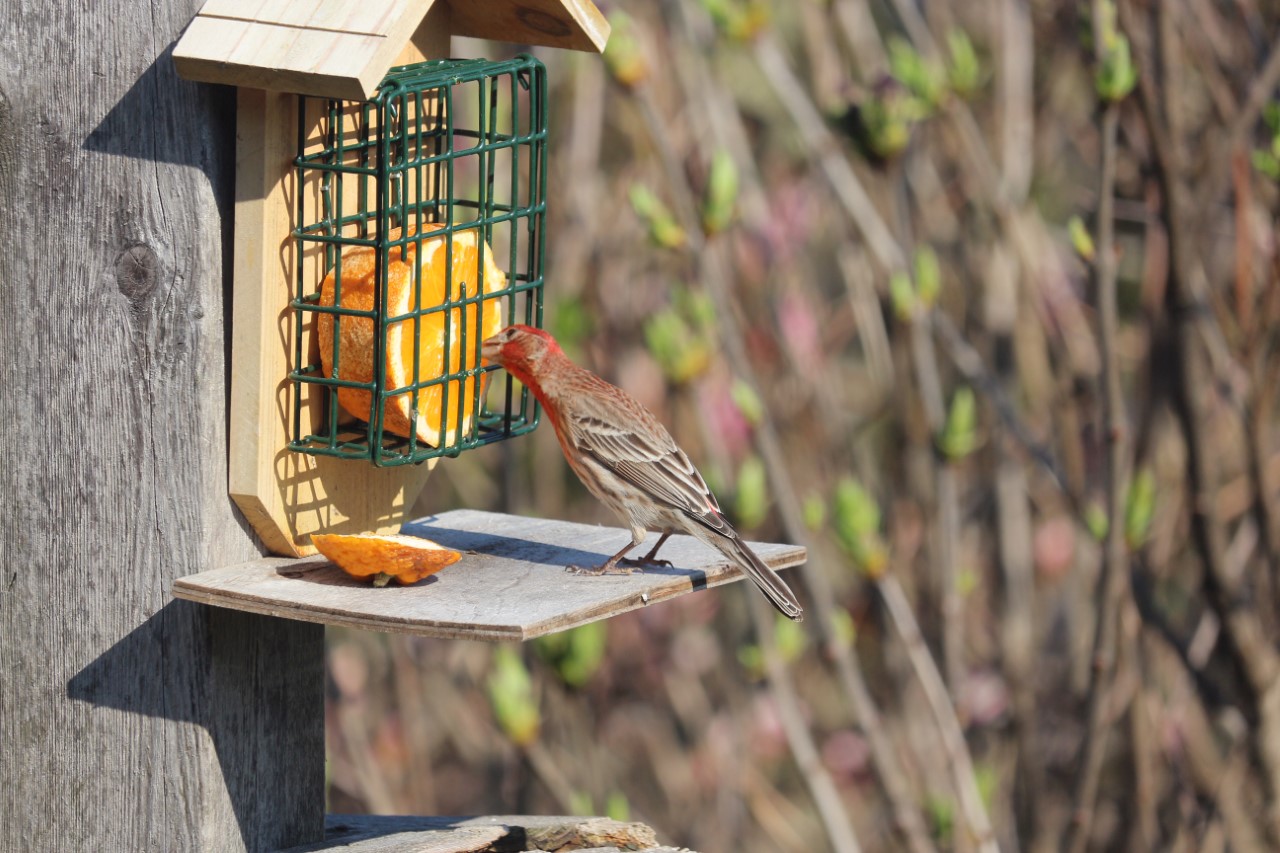
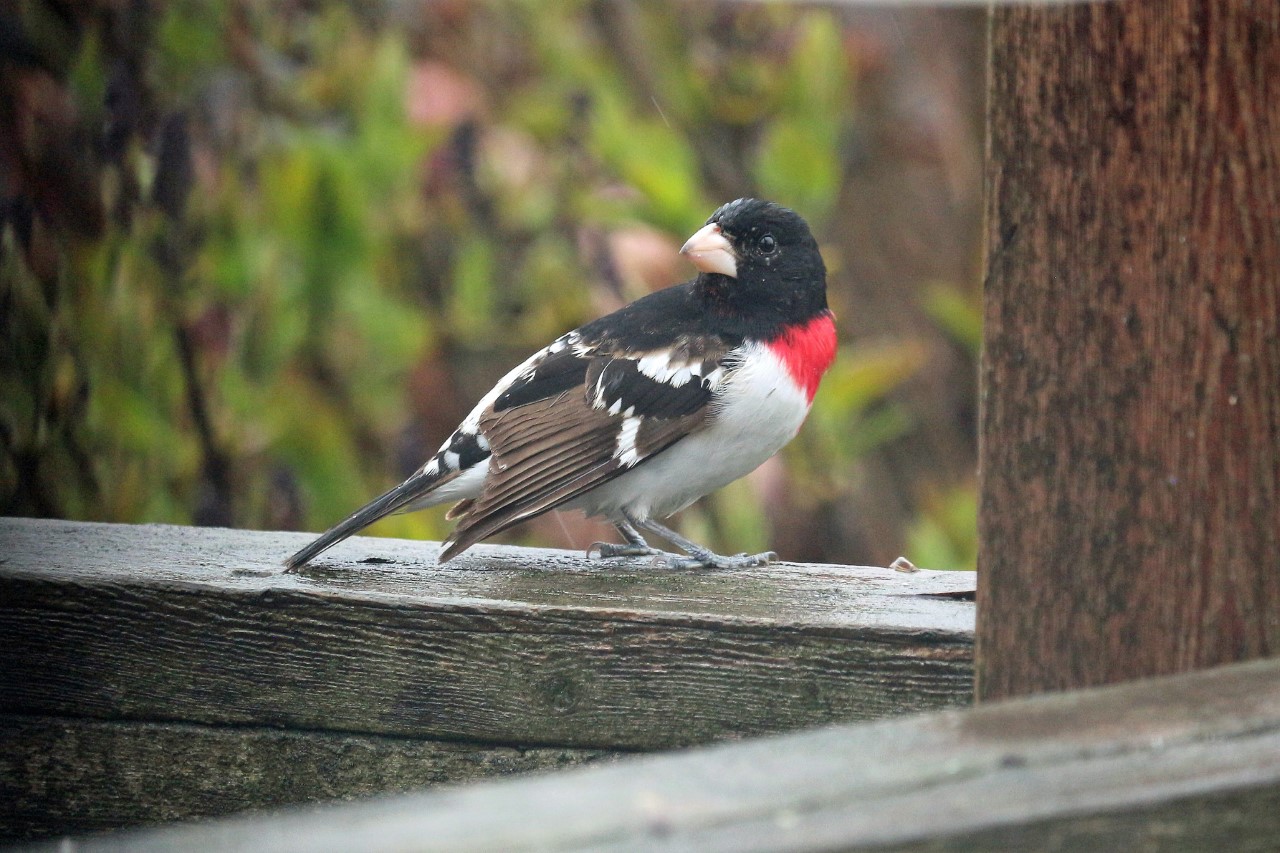
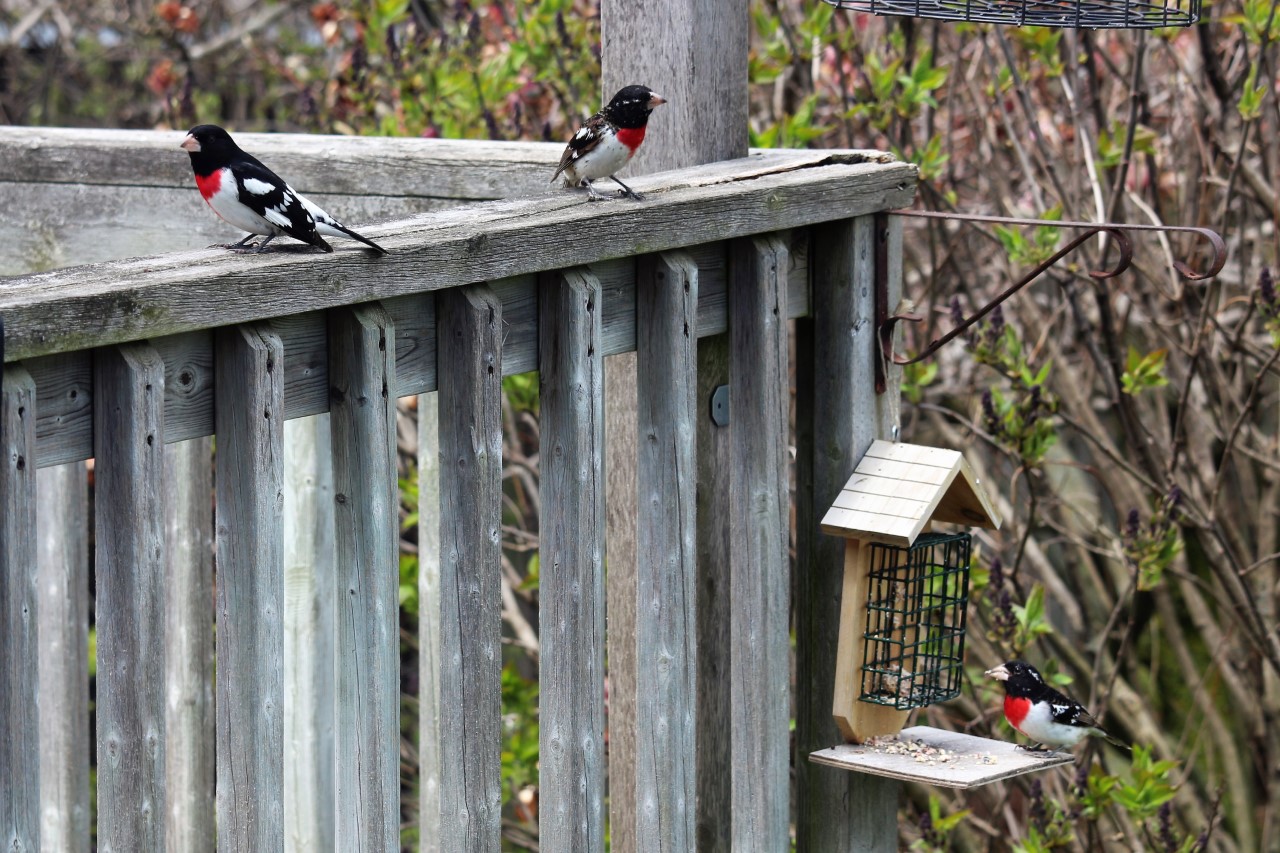
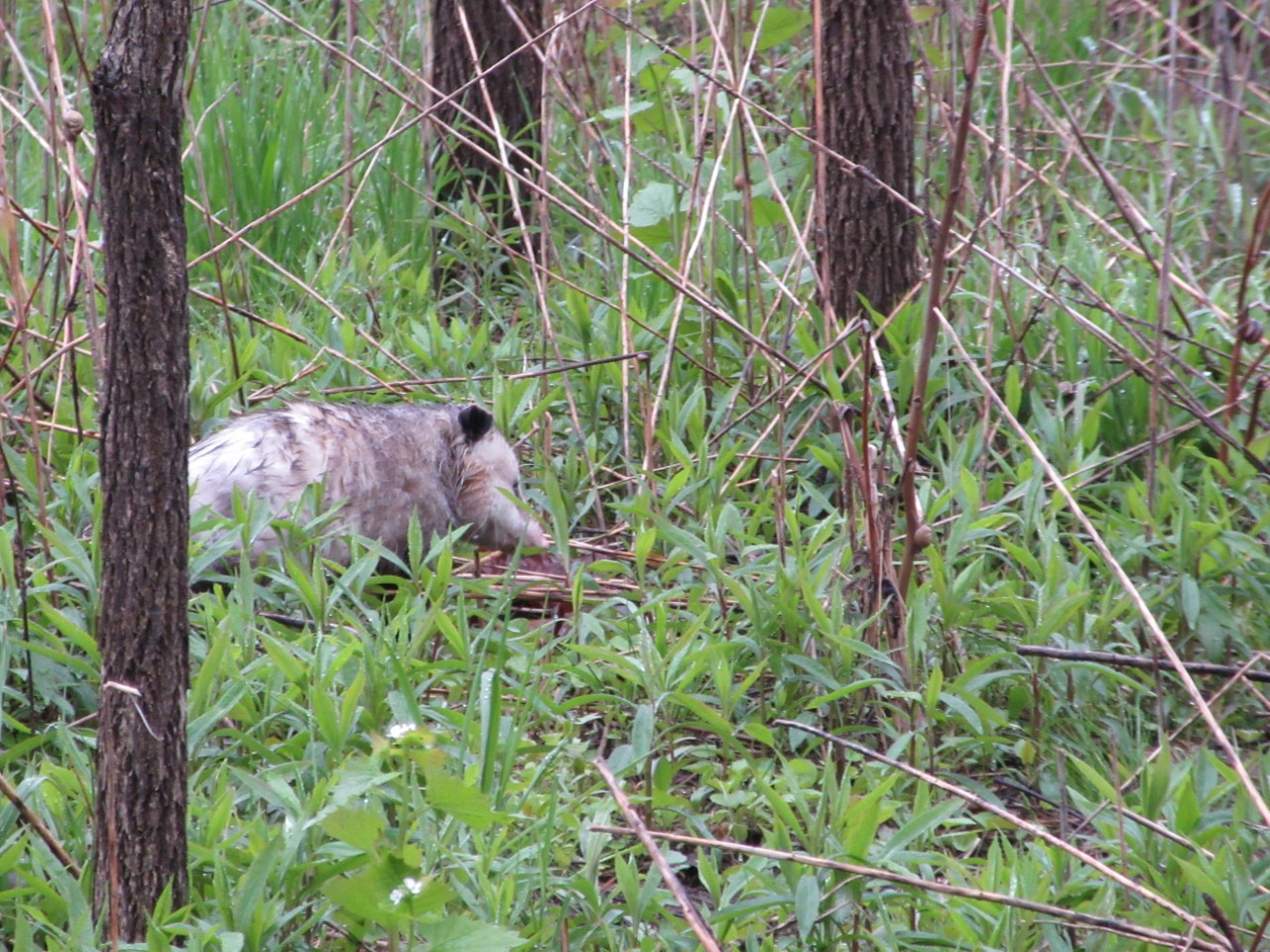
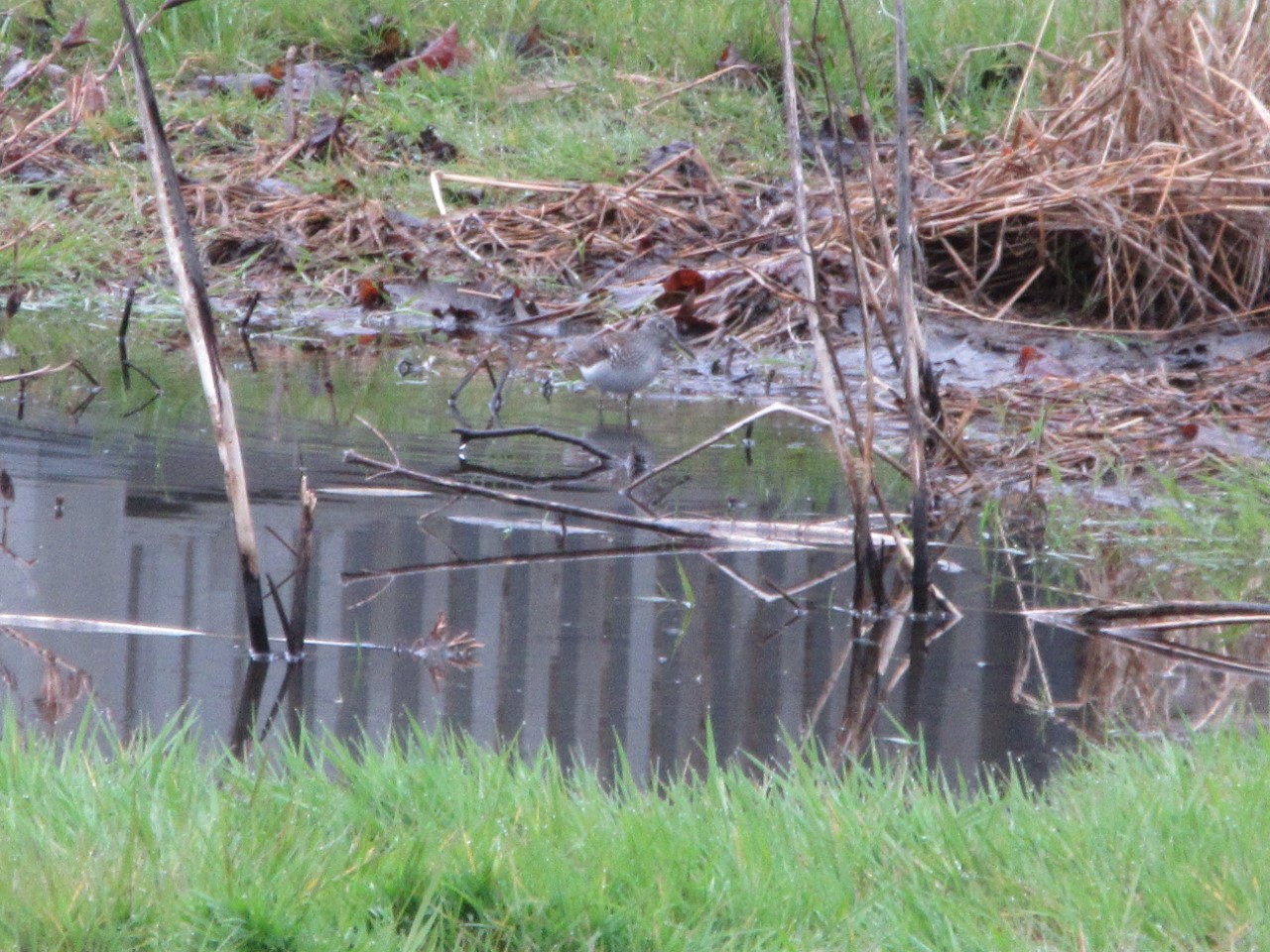
Rick
